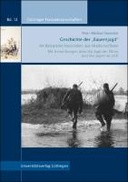Explore

Geschichte der „Bauernjagd“
0 Ungluers have
Faved this Work
Login to Fave
Since the Middle Ages, hunting has been a privileged pastime for rulers and the powerful in large parts of Europe. In Germany, the aristocratic right to hunt on other people's land did not formally end until the revolution of 1848/49. The interest of historians in hunting is therefore mainly focused on the art forms and attributes of courtly hunting, its protagonists, methods, weapons and equipment, the development of hunting fairness (Weidgerechtigkeit) and hunter's language (Weidmannssprache), hunting signals and hunting dogs.
This volume, on the other hand, deals with the question of whether and, if so, under what conditions peasants and members of the lower or non-peasant classes also pursued (huntable) wild animals, using examples mainly from Lower Saxony. The hunting laws generally ruled this out. Was it conceivable that a non-aristocratic hunting culture had survived alongside aristocratic hunting practices?
The period under investigation covers the early modern period and the 19th century, with pre- and post-times. Aspects of the development of hunting law, the functions of hunting as a resource for the ruling classes, bird-trapping and poaching as ʻhunting for the little manʼ, animal torture games and hunting criticism as well as the anthropological foundations of hunting are also touched upon.
This book is included in DOAB.
Why read this book? Have your say.
You must be logged in to comment.
Rights Information
Are you the author or publisher of this work? If so, you can claim it as yours by registering as an Unglue.it rights holder.Downloads
This work has been downloaded 0 times via unglue.it ebook links.
- 0 - pdf (CC BY-SA) at OAPEN Library.
Keywords
- development of hunting regulations
- hunting culture
- hunting law
- Technology, engineering, agriculture
Links
DOI: 10.17875/gup2025-2768Editions

